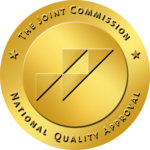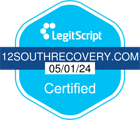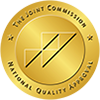
Blue Xanax bars, a form of alprazolam, serve as both a remedy for anxiety and a perilous path to addiction. As we navigate the intricacies of Blue Xanax addiction, it’s crucial to grasp its nuances for those ensnared and their loved ones. In this comprehensive guide, we’ll unravel the depths of Blue Xanax bars, exploring symptoms, risks, treatment options, and pathways to recovery. At 12 South Recovery in Lake Forest, CA, we’re committed to providing holistic care and support. Reach out to us at 866-311-4524 for personalized assistance and guidance on your journey to wellness.
Introduction to Blue Xanax Bars
Blue Xanax bars, scientifically known as alprazolam, belong to the benzodiazepine class of medications. Originally intended to alleviate symptoms of anxiety and panic disorders, they are recognizable by their characteristic blue color and rectangular shape, often imprinted with “B707.” Despite their therapeutic benefits, these bars carry a high potential for misuse and addiction, leading many down a treacherous path of dependency and despair.
Understanding Blue Xanax Addiction
At the core of Blue Xanax addiction lies a complex interplay of physiological, psychological, and environmental factors. Individuals may initially turn to Blue Xanax bars seeking relief from overwhelming anxiety or distress, only to find themselves ensnared by the grip of addiction. Understanding the multifaceted nature of this addiction is essential for crafting effective treatment strategies and facilitating lasting recovery.
Symptoms of Blue Xanax Addiction
Recognizing the signs and symptoms of Blue Xanax addiction is crucial for early intervention and treatment. While manifestations may vary from person to person, some common indicators include:
- Physical Dependence: Individuals may develop a tolerance to Blue Xanax over time, necessitating higher doses to achieve the desired effects and leading to physical dependence.
- Psychological Distress: Addiction to Blue Xanax often manifests in profound psychological distress, including heightened anxiety, depression, mood swings, and cognitive impairment.
- Social Isolation: As addiction tightens its grip, individuals may withdraw from social activities, neglect responsibilities, and prioritize obtaining and using Blue Xanax above all else.
- Risk-Taking Behavior: In pursuit of continued access to Blue Xanax, individuals may engage in risky behaviors such as doctor shopping, forging prescriptions, or obtaining the drug through illicit means.
Risks of Blue Xanax Addiction
The repercussions of Blue Xanax addiction extend far beyond the confines of individual health, permeating into various aspects of life and society at large. Some notable risks associated with Blue Xanax addiction include:
- Health Complications: Prolonged abuse of Blue Xanax can lead to a myriad of health complications, including respiratory depression, memory impairment, cognitive decline, and increased susceptibility to infections.
- Overdose: Due to its potent nature, the risk of overdose looms ominously over those entangled in Blue Xanax addiction, with potentially fatal consequences.
- Interpersonal Strain: Addiction can strain relationships with family, friends, and colleagues, eroding trust, fueling conflict, and perpetuating feelings of isolation and alienation.
- Legal Consequences: Obtaining Blue Xanax without a valid prescription or using it for non-medical purposes can have legal ramifications, including criminal charges, fines, and imprisonment.
Treatment Options for Blue Xanax Addiction
Seeking professional treatment is a crucial step towards breaking free from the chains of Blue Xanax addiction and reclaiming one’s life. At 12 South Recovery in Lake Forest, CA, we offer a comprehensive range of evidence-based treatment modalities tailored to meet the unique needs of each individual. Our treatment approach encompasses:
- Medical Detoxification: Under the supervision of our medical team, individuals undergo a safe and monitored detoxification process to rid their bodies of Blue Xanax and manage withdrawal symptoms.
- Individualized Therapy: Our therapy programs, including cognitive-behavioral therapy (CBT), dialectical behavior therapy (DBT), and trauma-informed care, address the underlying factors contributing to addiction and equip individuals with essential coping skills for sustained recovery.
- Dual Diagnosis Treatment: Recognizing the interplay between substance abuse and co-occurring mental health disorders, our dual diagnosis treatment approach ensures comprehensive care for individuals with complex needs.
- Holistic Interventions: In addition to traditional therapeutic modalities, we offer holistic interventions such as mindfulness practices, yoga, art therapy, and experiential therapies to promote holistic healing and well-being.
- Aftercare Support: Our commitment to long-term recovery extends beyond the confines of residential treatment, with robust aftercare planning and support services designed to facilitate successful reintegration into everyday life.
Reach Out to Us Today!
If you or someone you care about is grappling with Blue Xanax addiction, know that help is available. Contact 12 South Recovery in Lake Forest, CA, today at 866-311-4524 to speak with our compassionate admissions team and take the first step towards a brighter, drug-free future.
FAQs
Yes, with comprehensive treatment tailored to individual needs, Blue Xanax addiction can be effectively managed, and recovery is attainable.
Yes, there are several alternative medications and therapeutic interventions available for managing anxiety, including selective serotonin reuptake inhibitors (SSRIs), psychotherapy, and lifestyle modifications.
Long-term Blue Xanax addiction can exacerbate existing mental health conditions, precipitate the onset of new disorders, and impair cognitive functioning and emotional regulation.
Supporting a loved one with addiction involves providing empathy, encouragement, and resources for treatment, while also establishing boundaries and seeking support for yourself.
While not always mandatory, residential treatment offers a structured and supportive environment conducive to healing and recovery, particularly for individuals with severe addiction or co-occurring disorders.


















